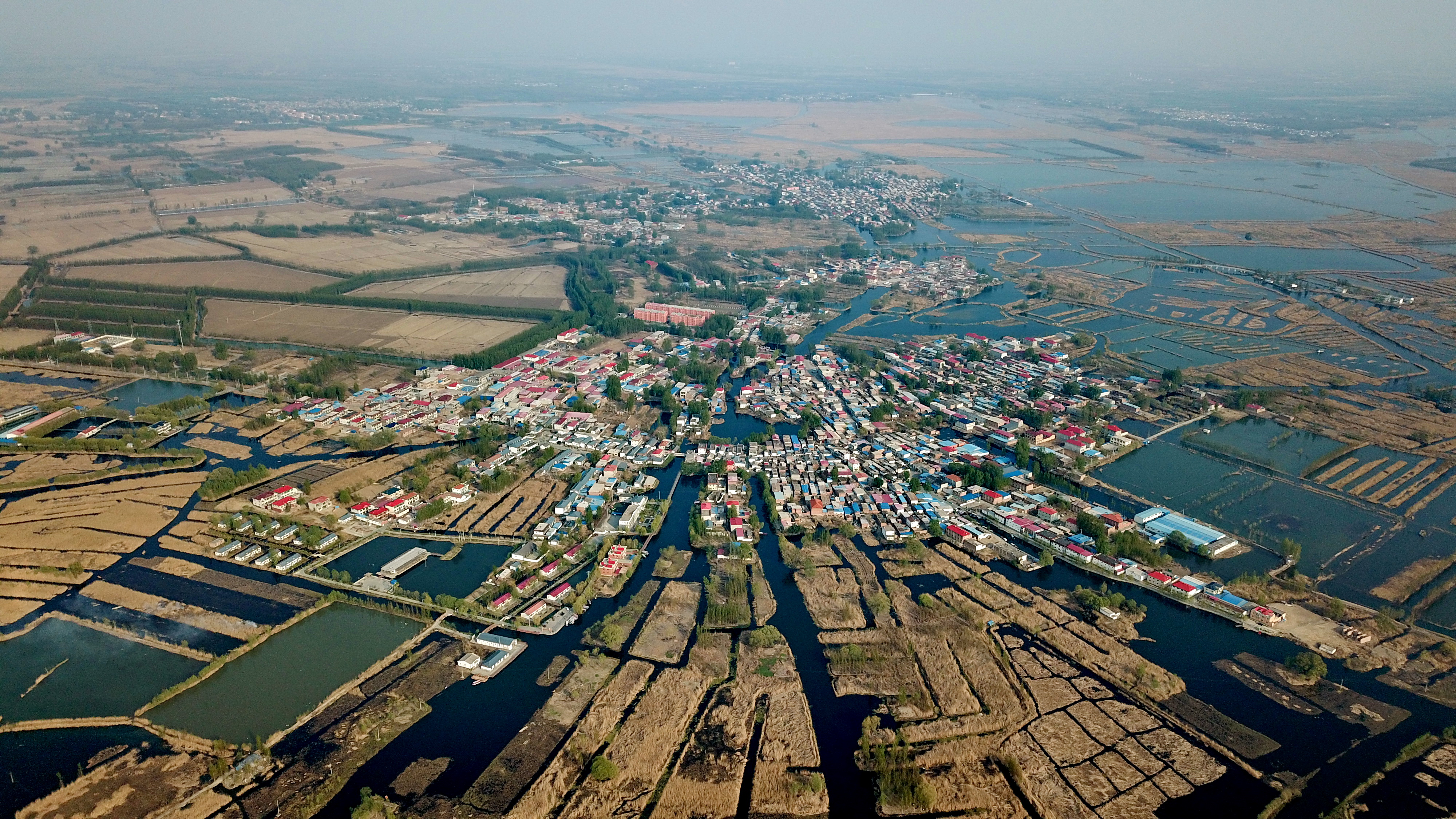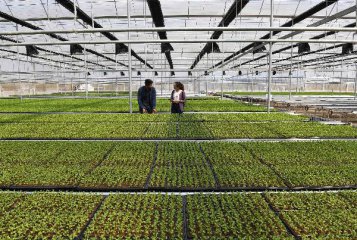
The aerial view of a village of Anxin County, Xiongan New Area. (Xinhua/Mou Yu)
SHIJIAZHUANG, April 24 (Xinhua) -- Every morning, Wang Mutou, 68, rows a boat for half an hour to work at a memorial hall.
The wetland he paddles in, Baiyangdian, is where his father-in-law Zhao Bo fought as a guerrilla against Japanese invaders during World War II.
Baiyangdian is the largest freshwater lake on the North China Plain in Hebei Province, consisting of thousands of water channels and ditches that connect nearby villages. Wang, from one of the villages in Anxin County, works as a guide, telling the anti-invasion stories of the guerrilla troops.
"The complicated landform made the wetland a natural battlefield," Wang told the visitors, adding that Zhao and his fellow villagers killed nearly 1,000 Japanese soldiers and their followers from 1939 to 1945.
Zhao's story has been made into the household movie "Little Soldier Zhang Ga," attracting tourists from across the country.
"I will continue to tell the stories of the guerrilla troops, so that their fighting spirit could influence people from generation to generation," Wang said.
In April 2017, China announced the establishment of the Xiongan New Area covering three counties including Anxin as a measure to advance the coordinated development of the Beijing-Tianjin-Hebei region, injecting the new development impetus to the revolutionary base.
According to the 2018-2035 master plan approved by the central authorities in January, Xiongan prioritizes ecological protection and green development, with water and trees planned to cover 70 percent of the area.
Efforts will be made to restore the local ecology, control pollution, and make sure the wetland water quality meets national standards, according to the plan.
Baiyangdian and its ecosystem started deteriorating in the 1960s as the continuous drought and upstream industries left the wetland at constant risk due to falling water levels, soil erosion and wastewater runoff. Data from the Hebei provincial environmental protection department showed that the water quality dropped to level 5, or serious pollution, in June 2016.
After the Xiongan New Area was inaugurated, the area has dredged ditches, closed fish farms and shut down the factories that fail to meet the wastewater discharge standard. Water from the Yellow River is also diverted in winter, ensuring the rising water levels of Baiyangdian.
More than 740 aquafarms were shut down last year, covering a water area of over 6,000 hectares.
Sewage treatment stations were also built in nearby villages.
Thanks to all the efforts, concentrations of phosphorus and ammonia nitrogen -- major pollutants in Baiyangdian wetland -- dropped by 35.16 percent and 45.45 percent in 2018.
Cao Haibo, an inspector of the provincial environmental protection department, said 78 percent of the wetland water has met the ecological standard.
Better ecology has brought more tourists. In 2018 alone, Baiyangdian saw more than 2.7 million tourists.
Local farmer Zhao Hui closed his fish farm last year, removing all his nets from the water.
"It's a tough decision as the farm had brought me abundant profits for eight years. But I think it's worth it because clean water is more important."
This year, Zhao plans to open a resort featuring water landscape and lotus flowers.
"Now that our village has become more and more beautiful, I bet more tourists will come," he said.






















Latest comments